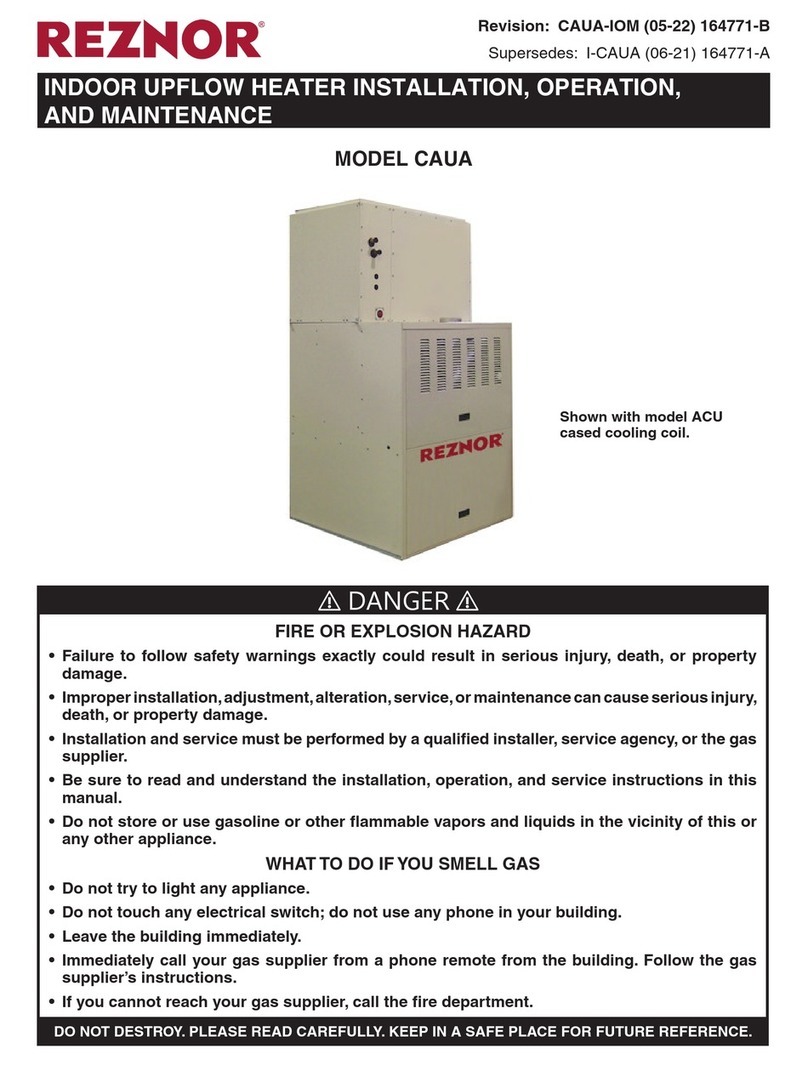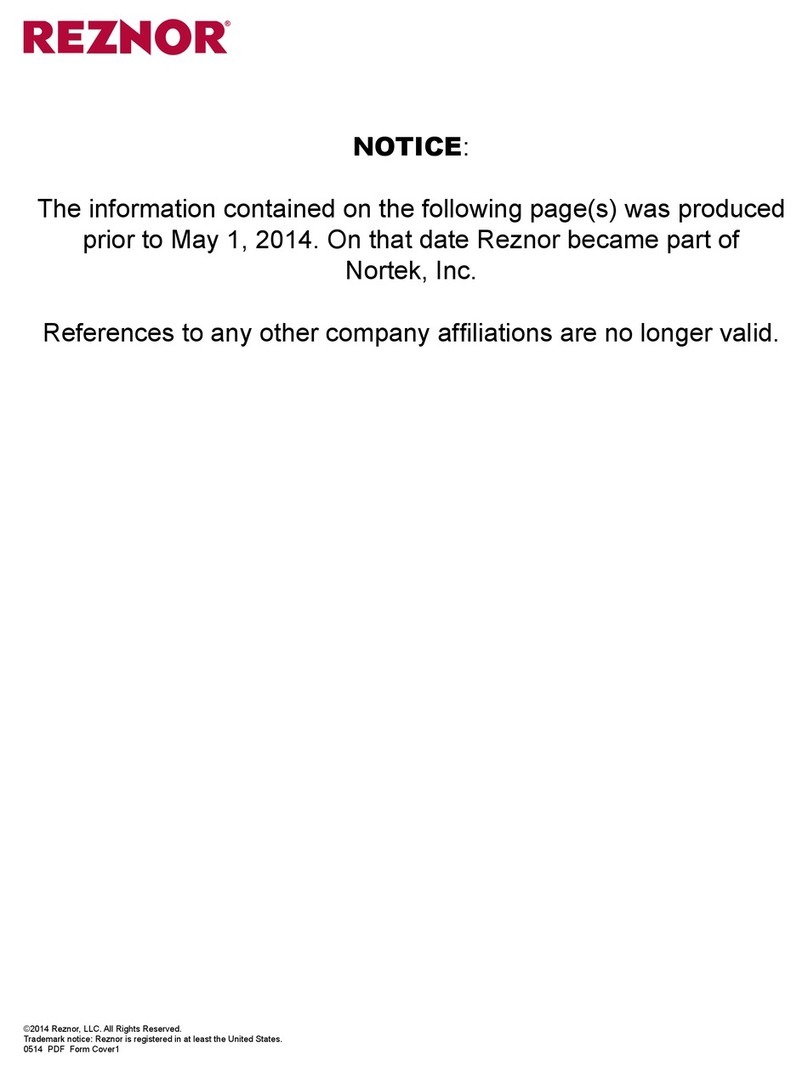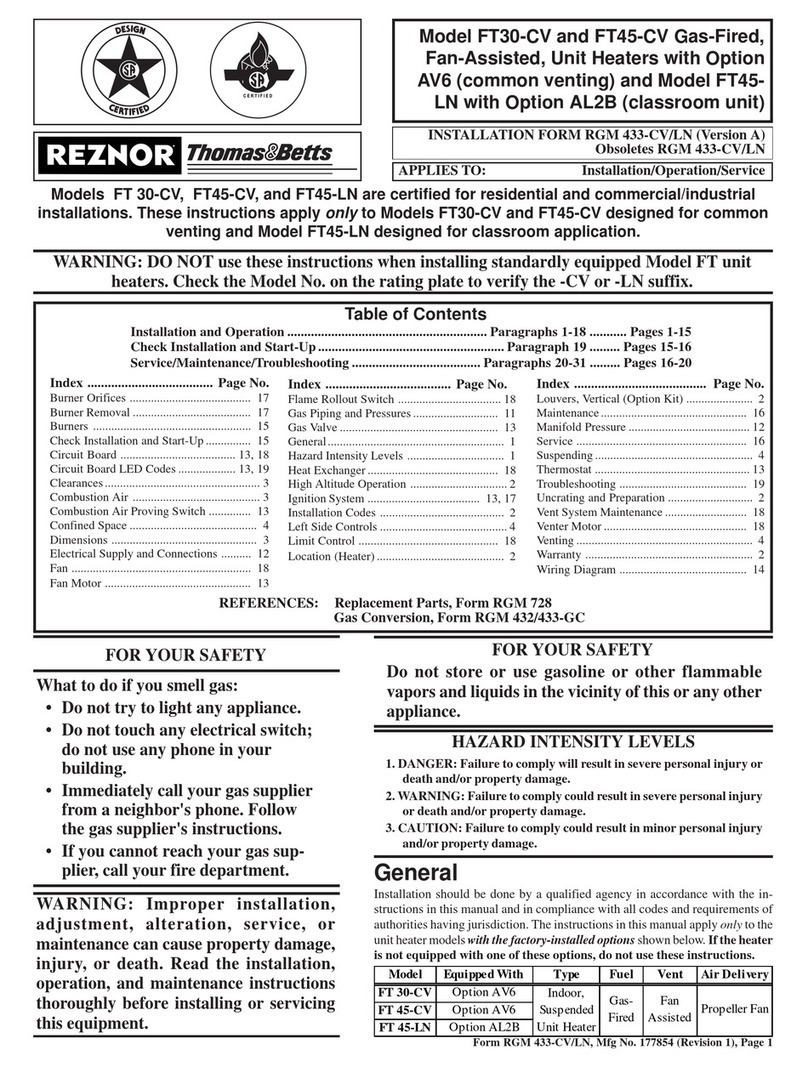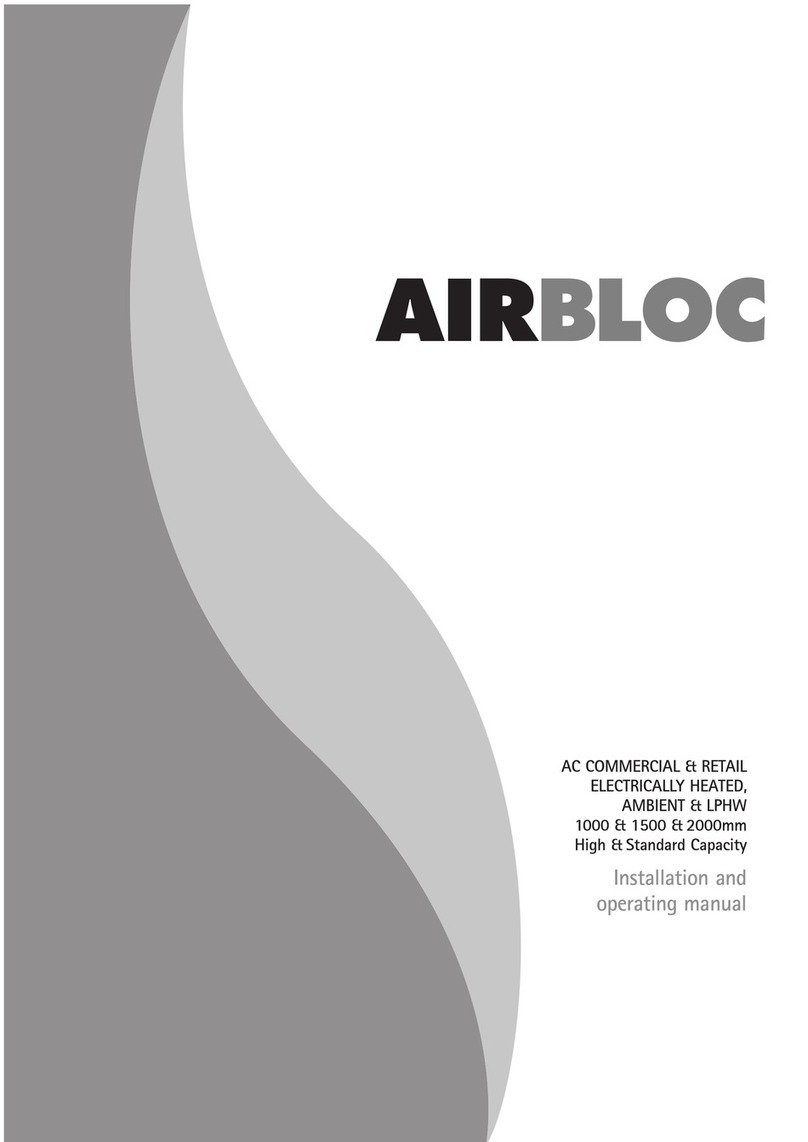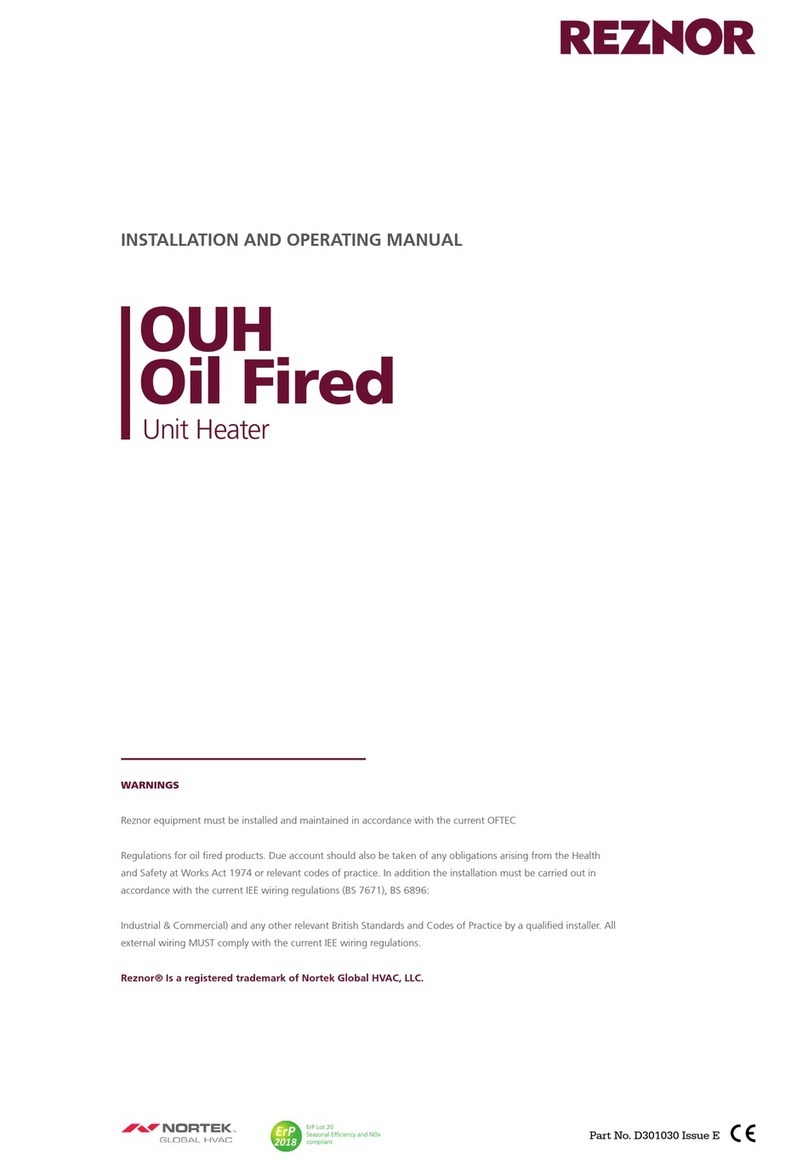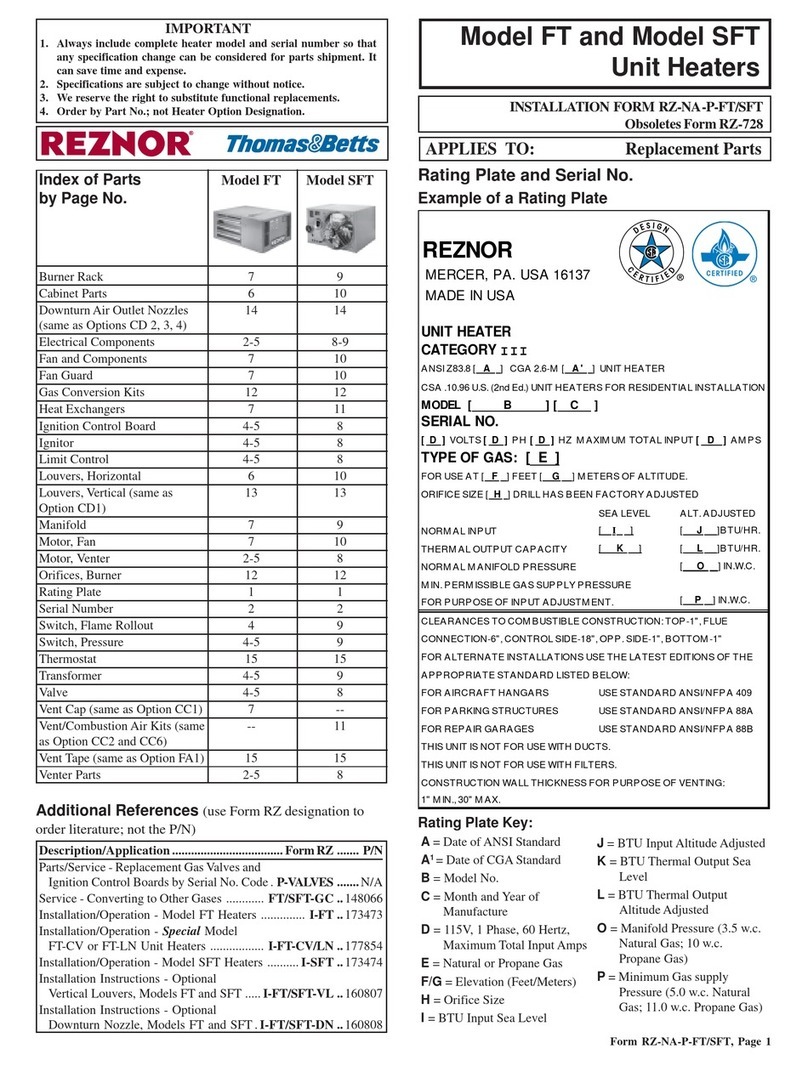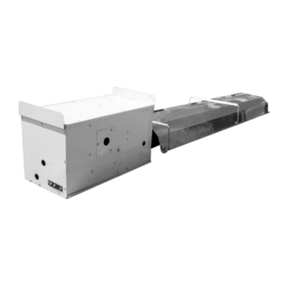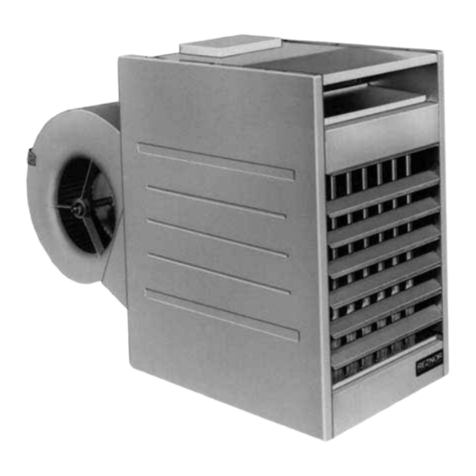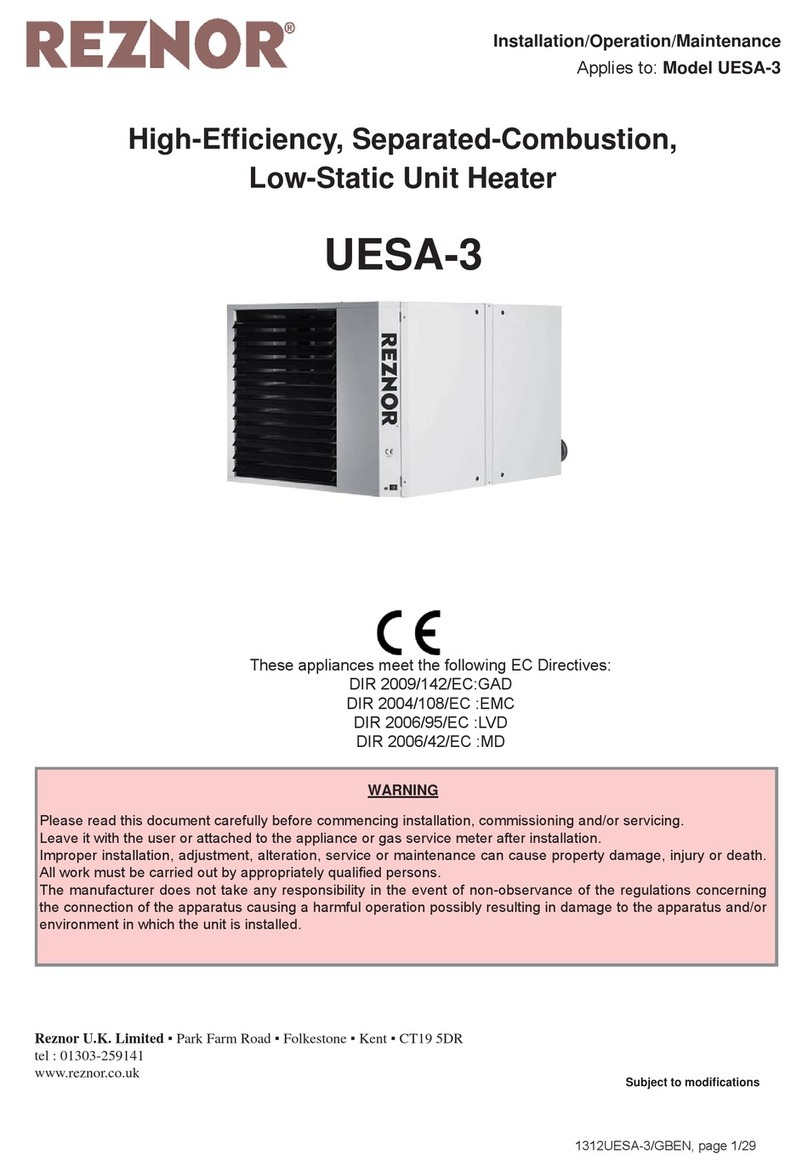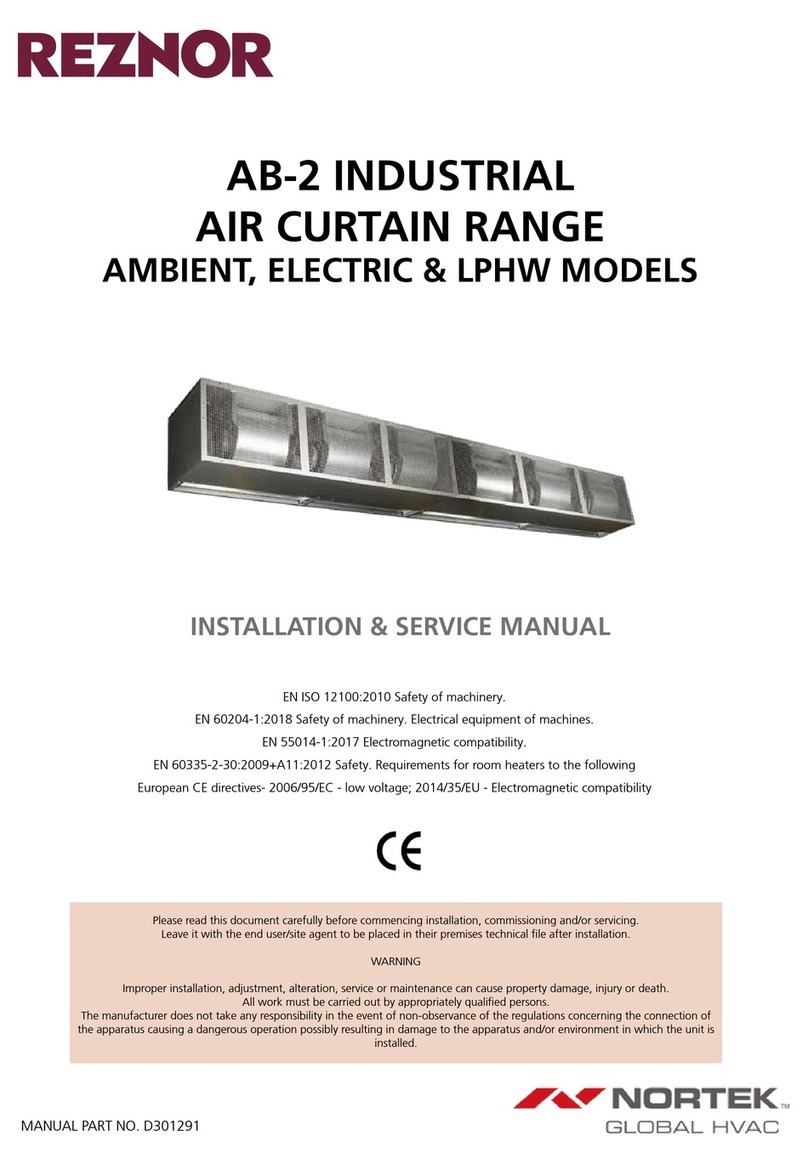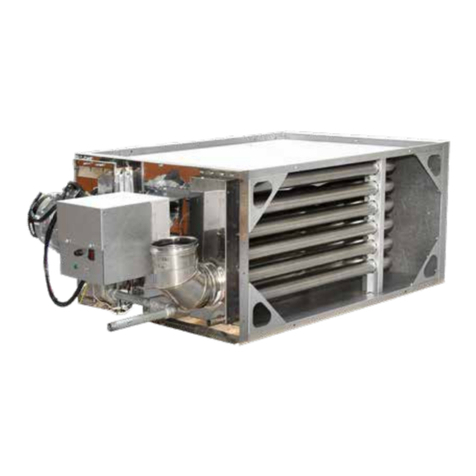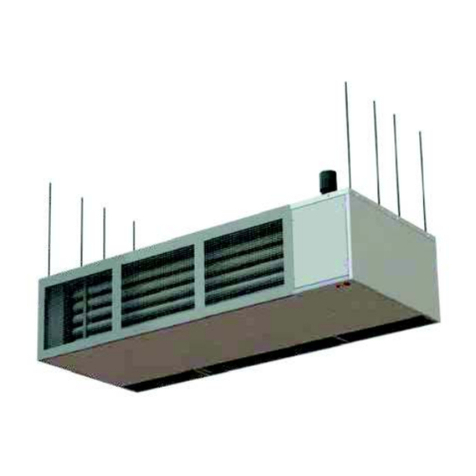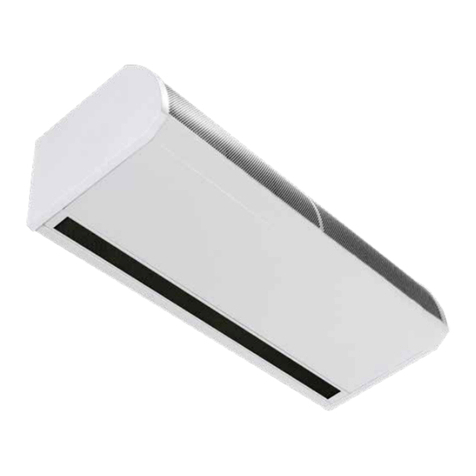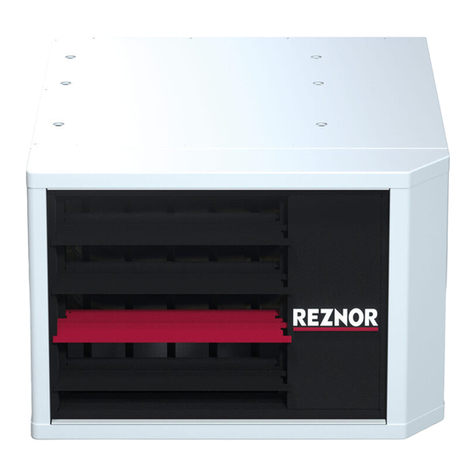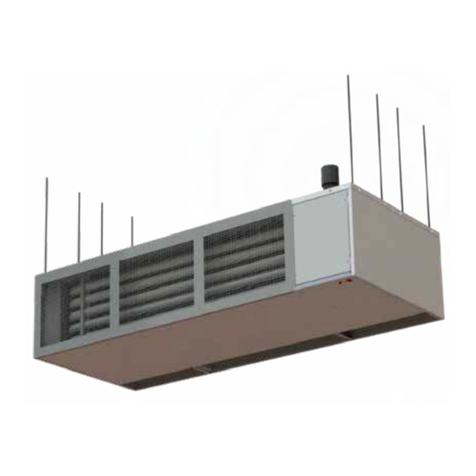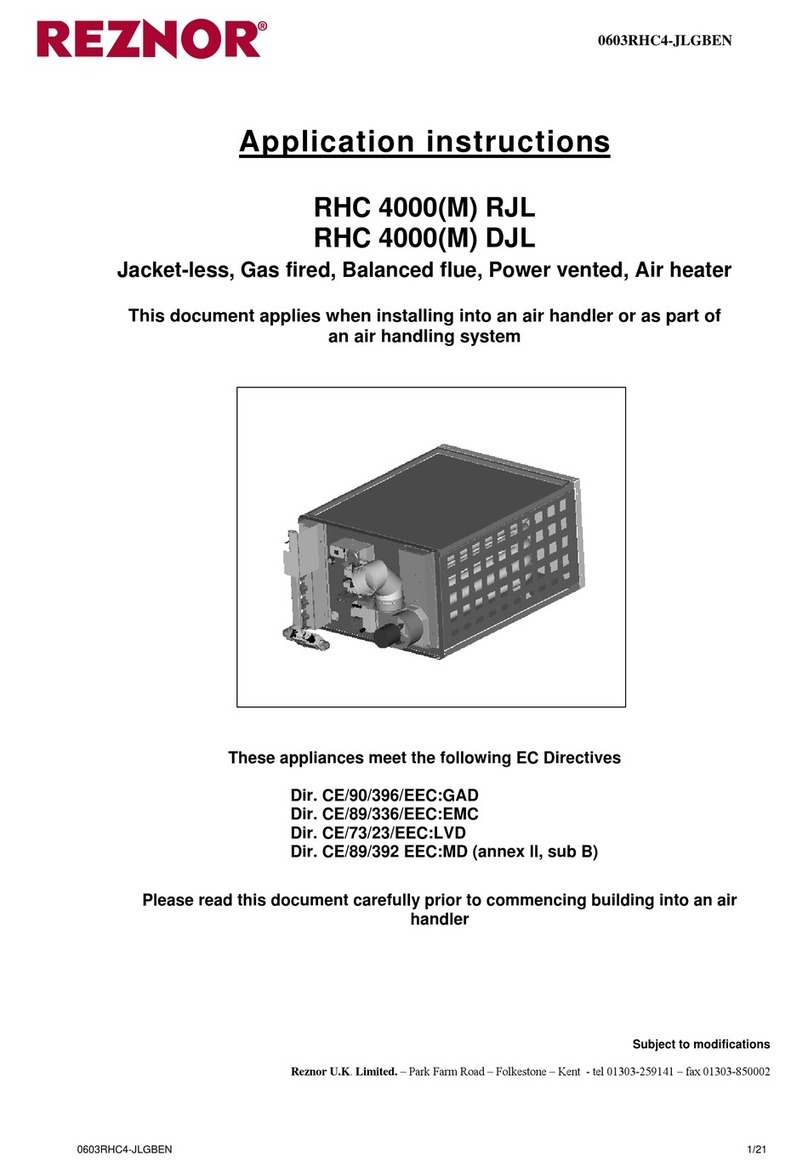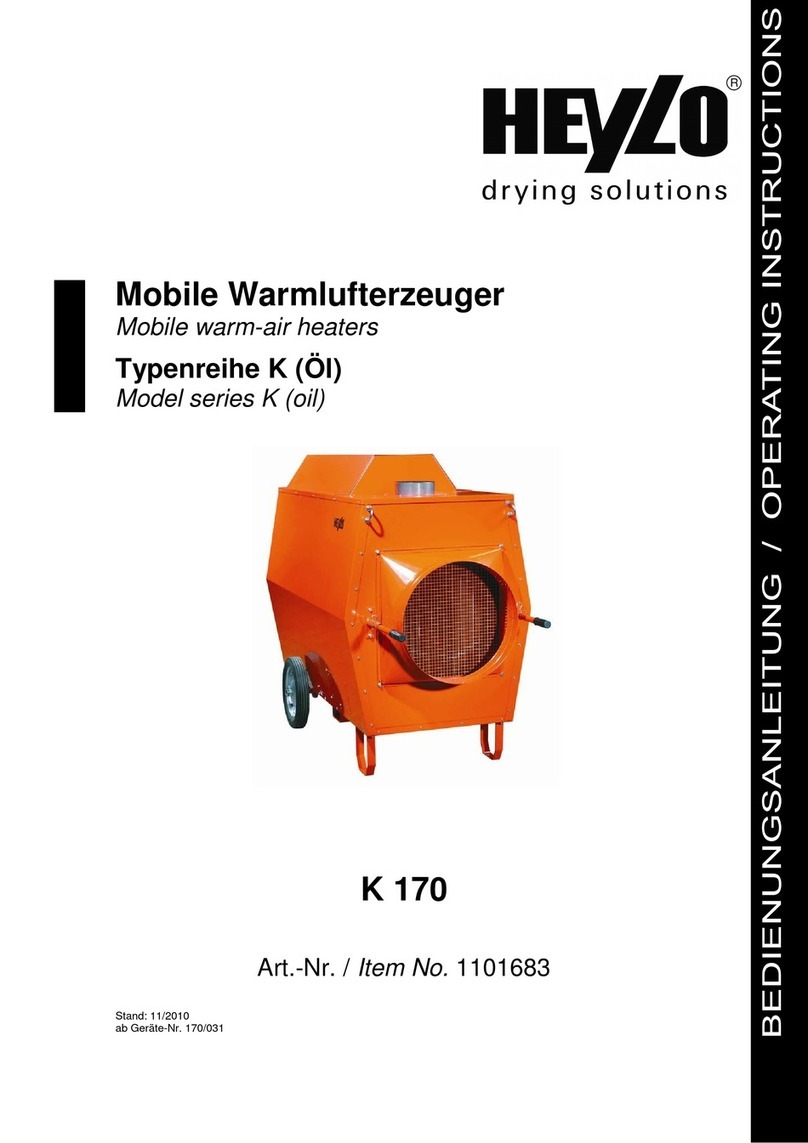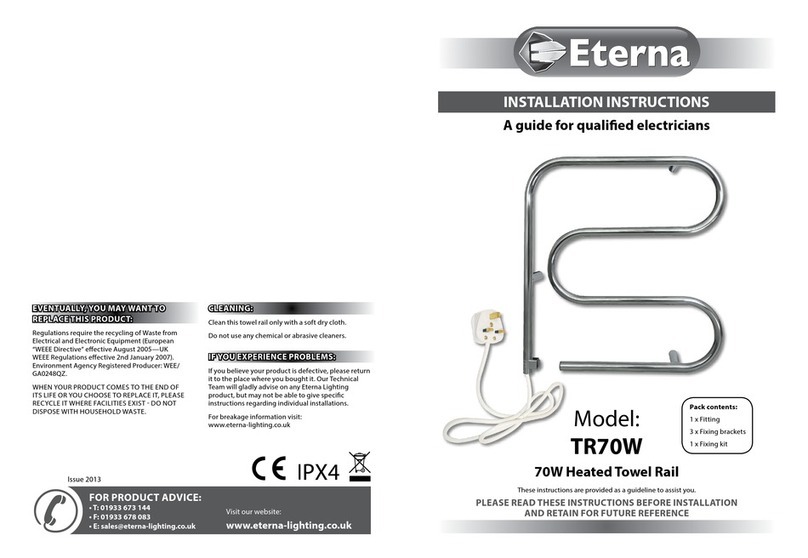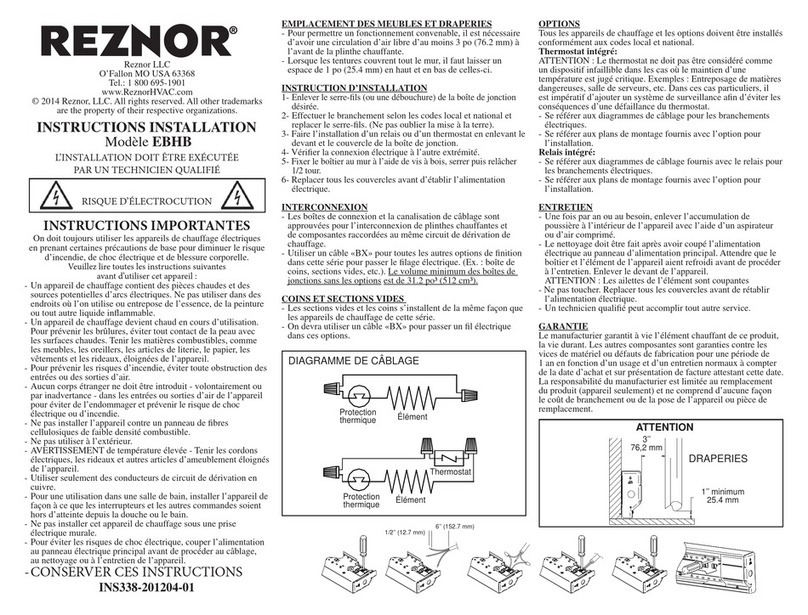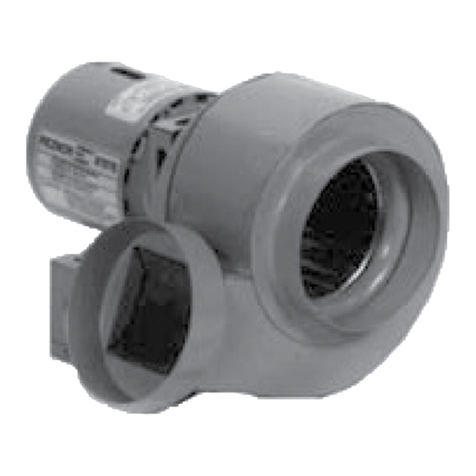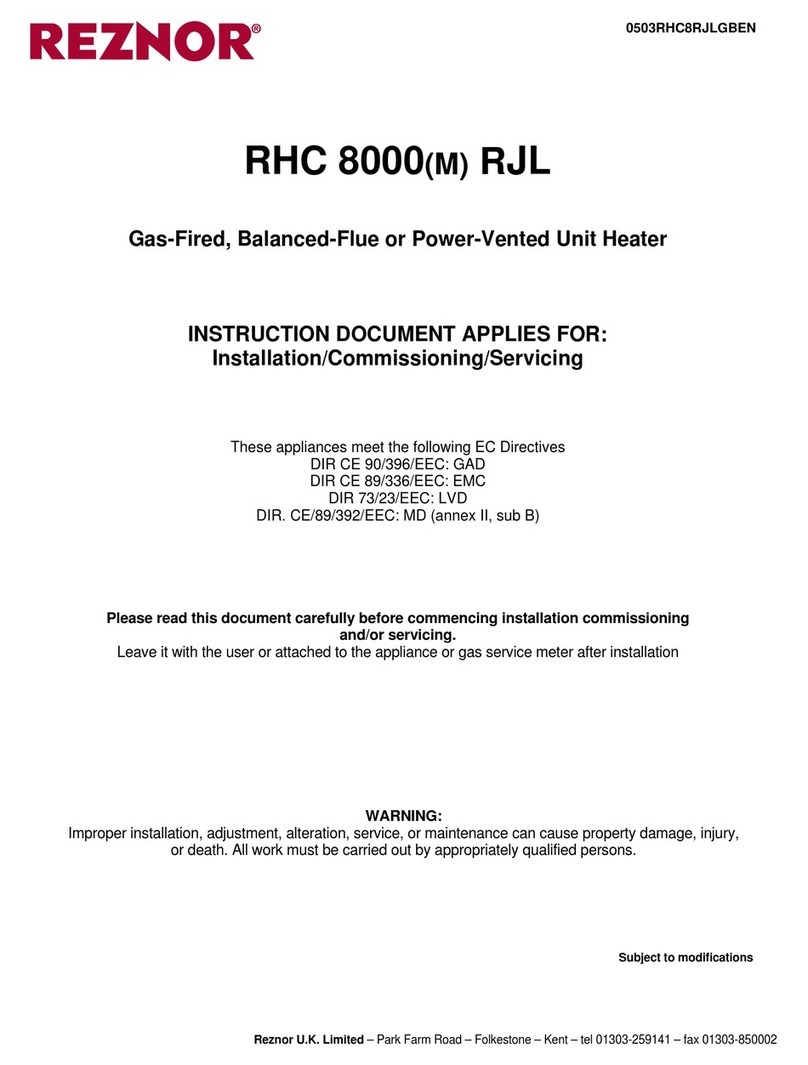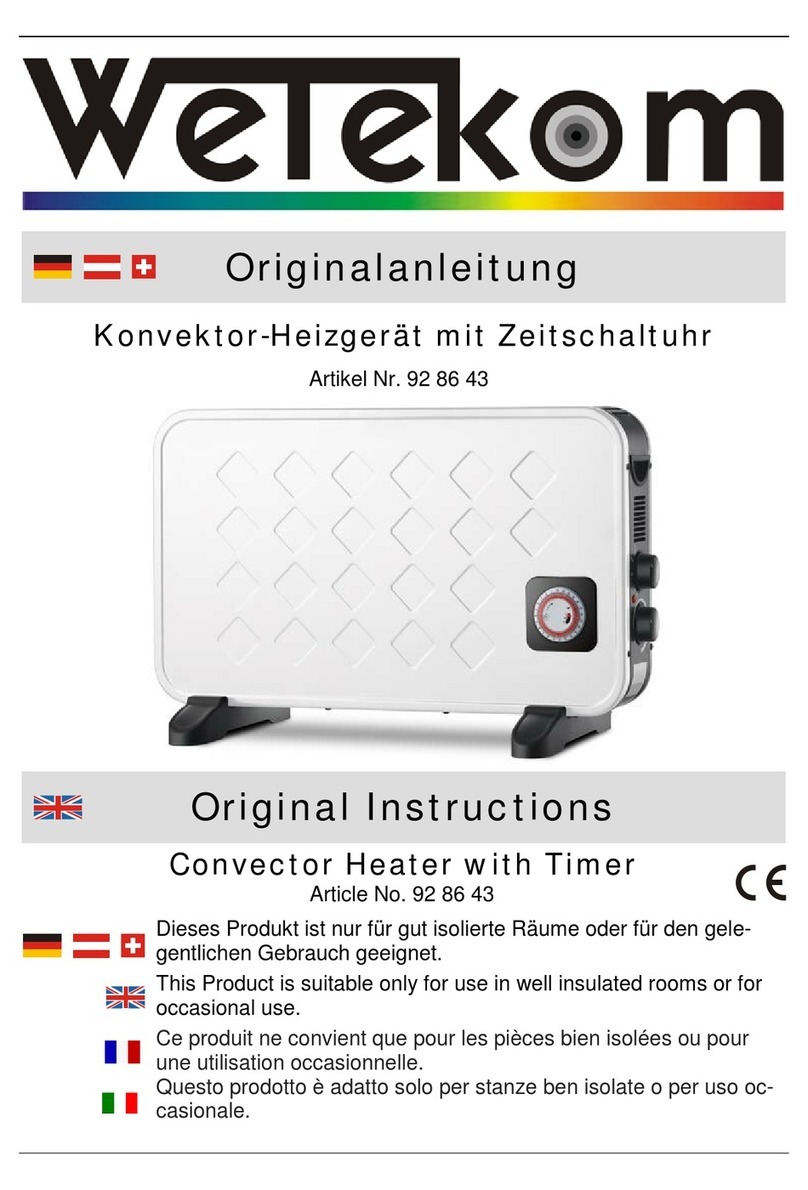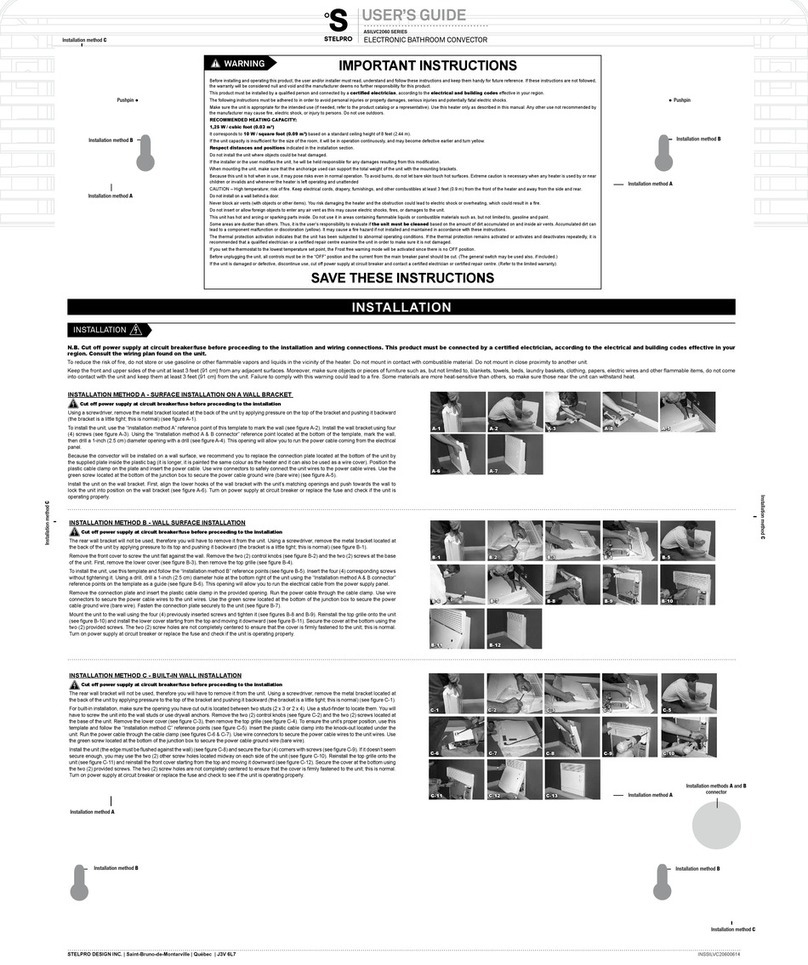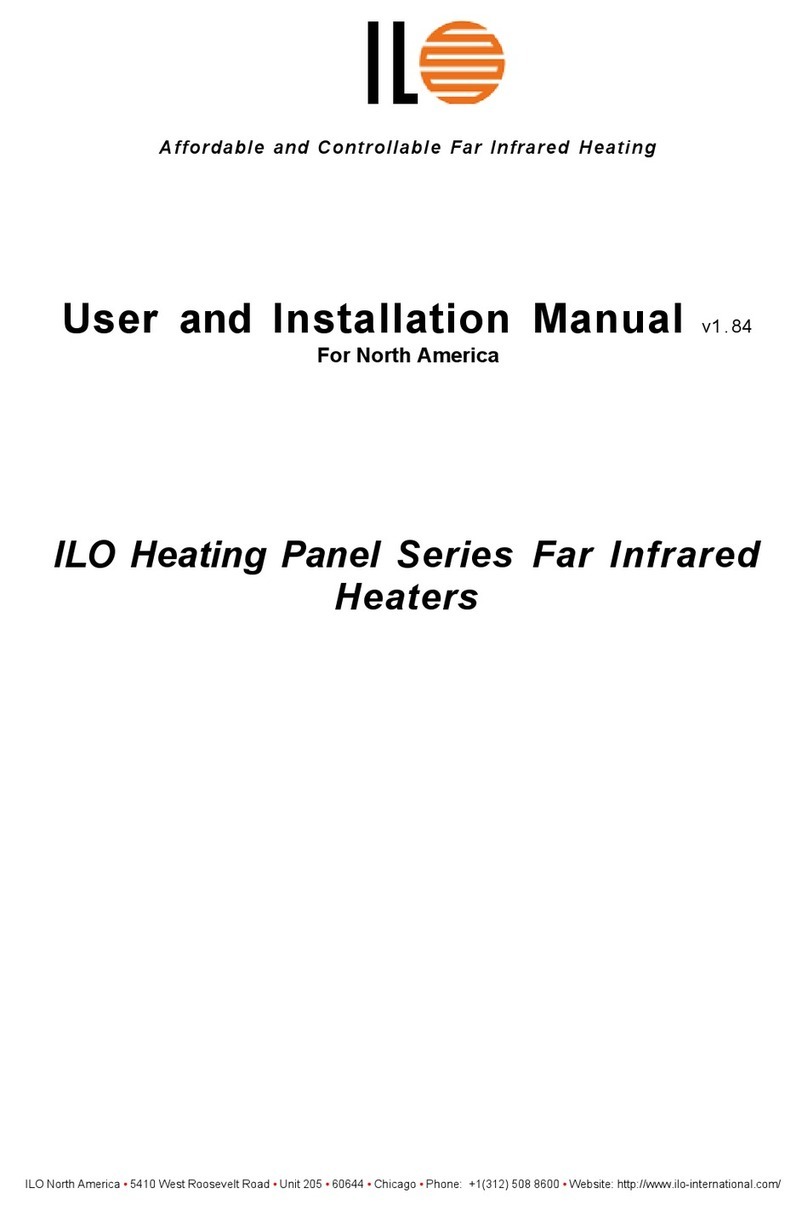
2LDAP-IOM (01-22) 207733-A
TABLE OF CONTENTS
GENERAL INFORMATION ............................................................................. 3
References ........................................................................................ 3
Important Safety Information........................................................................... 4
Certification........................................................................................ 4
Warranty .......................................................................................... 4
Installation Codes ................................................................................... 5
Cabinet Configurations ............................................................................... 5
Unit Location....................................................................................... 6
Heater Throw ...................................................................................... 6
Mounting Height Requirements ........................................................................ 7
Hazards of Chlorine ................................................................................. 7
Dimensions ........................................................................................ 8
Clearances .......................................................................................10
Weights.......................................................................................... 10
Combustion Air Requirements ........................................................................11
Acoustical Considerations............................................................................ 12
INSTALLATION .....................................................................................13
Unpacking and Inspection............................................................................13
Pre-Installation Checklist ............................................................................13
Heater Mounting ...................................................................................13
Suspension-Mounting ............................................................................14
Wall-Mounting ..................................................................................14
Piping Connections................................................................................. 15
Gas Supply Pressure............................................................................. 15
Gas Supply Piping............................................................................... 16
Supply Piping Connections ........................................................................ 16
Venting Connections................................................................................ 17
Venting Requirements............................................................................ 18
Vent Pipe Type .................................................................................19
Vent Pipe Size.................................................................................. 19
Vent System Sealing .............................................................................19
Condensation Mitigation ..........................................................................21
Vent System Support Requirements .................................................................21
Vent Terminal (Type of Pipe and Vent Cap) Requirements ...............................................21
Electrical Connections ..............................................................................23
Disconnect Switch Wiring .........................................................................24
Circuit Board Wiring.............................................................................. 24
Fan Motor Wiring................................................................................ 25
Thermostat Wiring ...............................................................................25
Optional Discharge Air Connections.................................................................... 25
Four-Way Discharge Louvers (Option CD32) .......................................................... 25
Discharge Nozzles (Options CD57, CD58, and CD59) ................................................... 25
CONTROLS ........................................................................................26
Pressure Switches ................................................................................. 26
High Temperature Limit Controls ......................................................................27
Automatic-Reset High Temperature Limit Control.......................................................27
Manual-Reset High Temperature Limit Control ......................................................... 27
Combination Gas Valve ............................................................................. 28
Fan Motor ........................................................................................28
Thermostat .......................................................................................28
Multiple Heater Control (Options CL31 and CL32) .........................................................28
Circuit Board (DSI Control Module) ....................................................................28
Air Destratification Fan Control........................................................................ 28

